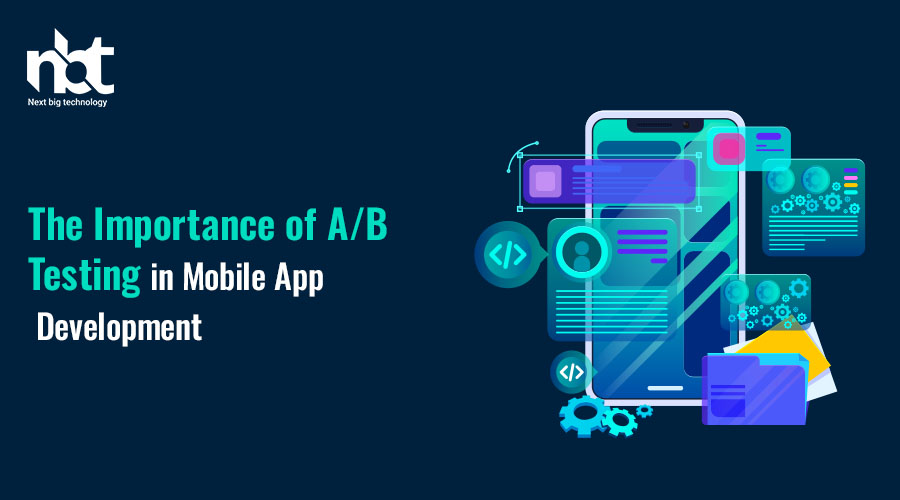Table of Contents
Introduction
A. Definition of A/B Testing
A/B testing, also known as split testing, is a method of comparing two versions of a webpage or app against each other to determine which one performs better. It involves changing one variable at a time, allowing developers to identify the most effective elements for user engagement.
B. Significance of Mobile App Development
Mobile apps are integral to our daily lives, serving various purposes from entertainment to productivity. The competition in the app market is fierce, making it crucial for developers to create apps that not only attract users but also retain them.
C. Purpose of A/B Testing in Mobile App Development
A/B testing in mobile app development serves the purpose of optimizing user experience and increasing the app’s overall performance. By testing different elements, developers can make data-driven decisions that enhance user satisfaction and drive business goals.
Benefits of A/B Testing
A. Improved User Experience
A/B testing allows developers to experiment with different layouts, colors, and features to determine which combination resonates best with users. This leads to an improved user experience, resulting in higher satisfaction and increased retention rates.
B. Enhanced Conversion Rates
In the competitive landscape of mobile apps, converting users into customers is paramount. A/B testing helps identify the most effective call-to-action buttons, forms, and purchase processes, ultimately boosting conversion rates.
C. Increased User Engagement
Understanding user behavior is essential for app developers. A/B testing enables them to test various features and functionalities, optimizing for increased user engagement. By analyzing the data, developers can tailor the app to meet user preferences.
A/B Testing Best Practices
A. Clearly Defined Goals
Before conducting A/B tests, developers must have clear goals in mind. Whether it’s improving conversion rates or increasing user engagement, having well-defined objectives ensures meaningful results.
B. Testing Variables
A/B testing is effective when focusing on one variable at a time. Whether it’s a button color, app layout, or notification frequency, isolating variables provides accurate insights into what drives user behavior.
C. Sample Size Consideration
To ensure statistical significance, developers must consider the sample size of their tests. Testing on a representative group of users helps draw reliable conclusions about the app’s overall performance.
Real-life Examples of Successful A/B Testing
A. Case Study 1: App Interface Redesign
A popular music streaming app conducted A/B testing to redesign its interface. By simplifying navigation and optimizing the placement of key features, the app experienced a 20% increase in user engagement.
B. Case Study 2: In-app Feature Testing
A fitness app experimented with different workout tracking features through A/B testing. The version that allowed users to customize their workout plans saw a 15% boost in user retention.
C. Case Study 3: Push Notification Strategies
An e-commerce app tested various push notification strategies to re-engage inactive users. Through A/B testing, the app discovered that personalized notifications resulted in a 25% increase in reactivation.
Challenges and Solutions in A/B Testing
A. Overcoming Statistical Significance Challenges
One common challenge in A/B testing is ensuring results are statistically significant. Developers can overcome this by increasing the sample size or extending the duration of the test.
B. Minimizing Bias in Testing
Bias can skew A/B testing results. Developers should randomly assign users to different test groups, ensuring that the sample is representative and unbiased.
C. Addressing Resource Constraints
Smaller development teams may face resource constraints when implementing A/B testing. Open-source tools and cost-effective platforms can help overcome budget limitations.
Tools for A/B Testing in Mobile App Development
A. Google Optimize
Google Optimize offers a user-friendly platform for A/B testing, allowing developers to experiment with various elements and analyze results seamlessly.
B. Optimizely
Optimizely is a popular A/B testing tool that provides in-depth insights into user behavior. Its easy integration with mobile apps makes it a go-to choice for developers.
C. Apptimize
Apptimize is a versatile A/B testing tool designed specifically for mobile apps. It offers real-time analytics and an intuitive interface for efficient testing.
A/B Testing and User Feedback Integration
A. Importance of User Feedback
While A/B testing provides valuable quantitative data, integrating user feedback adds qualitative insights. The combination of both approaches ensures a holistic understanding of user preferences.
B. Strategies for Combining A/B Testing and User Feedback
Developers can encourage users to provide feedback during A/B tests, using surveys or feedback forms. This dual approach provides a comprehensive view of the user experience.
C. Iterative Development Process
A/B testing and user feedback should be part of an iterative development process. Continuous refinement based on data and user insights leads to a mobile app that evolves with user needs.
Metrics to Measure in A/B Testing
A. Conversion Rate
Conversion rate is a key metric in A/B testing, indicating the percentage of users who take a desired action, such as making a purchase or signing up for a subscription.
B. Retention Rate
Retaining users is crucial for long-term success. A/B testing helps identify features that contribute to higher retention rates, ensuring sustained user engagement.
C. User Satisfaction
Measuring user satisfaction provides qualitative insights into the overall app experience. Surveys and feedback forms can be incorporated into A/B testing strategies to gauge satisfaction levels.
Common Misconceptions About A/B Testing
A. A/B Testing is Only for Large Companies
Contrary to popular belief, A/B testing is not exclusive to large corporations. Even smaller development teams can benefit from this methodology to optimize their apps effectively.
B. A/B Testing is Time-Consuming
While A/B testing requires time for accurate results, the benefits outweigh the investment. Quick iterations based on data lead to a more refined and user-friendly app.
C. A/B Testing Only Involves Design Changes
A/B testing goes beyond design changes. It can encompass anything from pricing strategies and feature sets to onboarding processes, providing a comprehensive approach to optimization.
Future Trends in A/B Testing for Mobile Apps
A. AI-powered A/B Testing
The integration of artificial intelligence in A/B testing is on the rise. AI algorithms can analyze vast amounts of data, providing more accurate insights and recommendations for optimization.
B. Personalization in A/B Testing
The future of A/B testing involves personalization. Tailoring experiments to individual user preferences ensures a more customized and engaging app experience.
C. Integration with Emerging Technologies
As technologies like augmented reality and virtual reality become mainstream, A/B testing will extend to these realms, allowing developers to optimize user experiences in innovative ways.
Conclusion
A. Recap of A/B Testing Significance
A/B testing is a powerful tool in mobile app development, enabling developers to make data-driven decisions that enhance user experience, conversion rates, and overall app performance.
B. Continuous Improvement in Mobile App Development
The iterative nature of A/B testing aligns with the concept of continuous improvement. By embracing A/B testing, developers commit to ongoing enhancement, staying competitive in the ever-evolving app landscape.
FAQs
A. What is the ideal duration for an A/B test?
The duration of an A/B test depends on the complexity of the changes being tested. However, a minimum of two weeks is recommended to gather sufficient data.
B. Can A/B testing be applied to all types of mobile apps?
Yes, A/B testing is a versatile methodology that can be applied to various types of mobile apps, regardless of their size or purpose.
C. How often should A/B testing be conducted?
A/B testing should be conducted regularly, especially during app updates or significant feature additions. This ensures continuous optimization based on evolving user preferences.
D. Are there any ethical considerations in A/B testing?
Ethical A/B testing involves obtaining informed consent from users and ensuring that experiments do not adversely impact user experience or privacy.
E. What role does user feedback play in A/B testing?
User feedback complements quantitative data from A/B testing, providing qualitative insights into user preferences, pain points, and overall satisfaction.
Thanks for reading our post “The Importance of A/B Testing in Mobile App Development”. Please connect with us to know more about Testing in Mobile App Development.






















